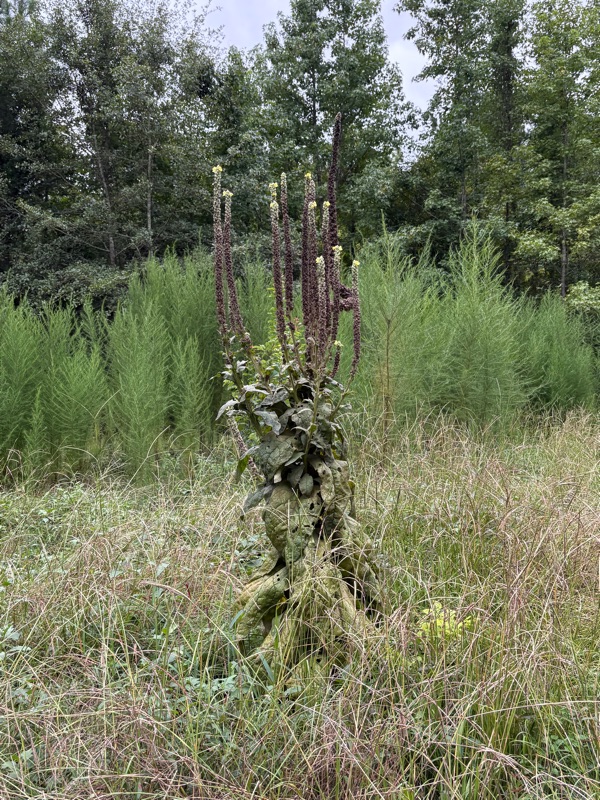Mullein
 Ever wonder what that odd stalk-like weed is in a pasture near your house? That is most likely Verbascum thapsus! Commonly known as mullein, candlewick, and flannel plant, it is a part of the scrophulariacea family, or snapdragon family. It is considered an invasive plant, notoriously growing in disturbed, sunny areas and thrives on roadsides, fields, forest clearings, and is often found in dry, sandy soil. Despite its odd, unattractive appearance, it is both edible and has many health benefits! It is best to forage roots for consumption in autumn of the first year of this biennial’s lifespan, though it may be harder to find in its first year of growth due to its closeness to the ground. The roots are known for being a great remedy for back pain, often being made into herbal tinctures. In its second year it is much more noticeable, as it grows into a 6-8 foot tall green stalk, later turning brown when the seeds are produced, with bright yellow flowers. The flowers are edible in itself, but they can also be used in herbal teas to treat bronchial complaints and even ear infections! Be careful, though, because despite the roots, leaves, and flowers are edible and super beneficial, the seeds are known for being toxic!
Ever wonder what that odd stalk-like weed is in a pasture near your house? That is most likely Verbascum thapsus! Commonly known as mullein, candlewick, and flannel plant, it is a part of the scrophulariacea family, or snapdragon family. It is considered an invasive plant, notoriously growing in disturbed, sunny areas and thrives on roadsides, fields, forest clearings, and is often found in dry, sandy soil. Despite its odd, unattractive appearance, it is both edible and has many health benefits! It is best to forage roots for consumption in autumn of the first year of this biennial’s lifespan, though it may be harder to find in its first year of growth due to its closeness to the ground. The roots are known for being a great remedy for back pain, often being made into herbal tinctures. In its second year it is much more noticeable, as it grows into a 6-8 foot tall green stalk, later turning brown when the seeds are produced, with bright yellow flowers. The flowers are edible in itself, but they can also be used in herbal teas to treat bronchial complaints and even ear infections! Be careful, though, because despite the roots, leaves, and flowers are edible and super beneficial, the seeds are known for being toxic!
(Information found at Practicalselfreliance.com)
Comments
Post a Comment